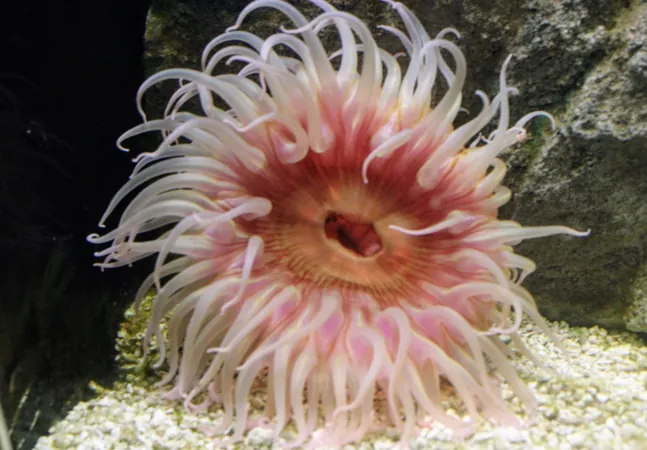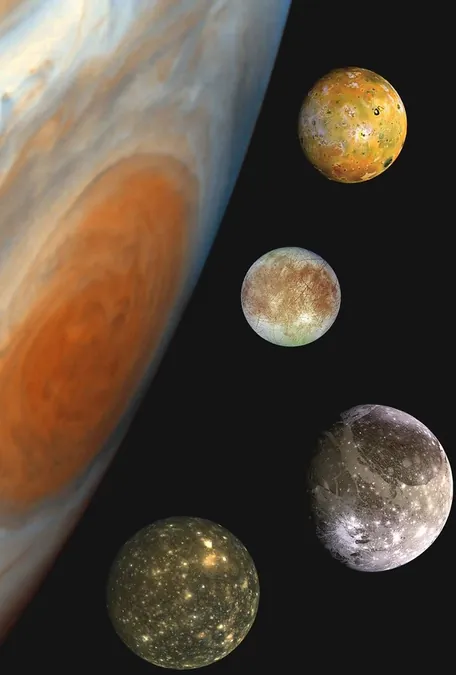
Revolutionary Discovery: Sea Anemones Share an Ancient Trait with Humans!
2025-06-15
Author: Noah
Unlocking the Secrets of Sea Anemones
Think sea anemones are just simple ocean dwellers? Think again! These fascinating creatures possess a complex biological design that mirrors the front-to-back structure seen in many animals, including humans.
The Surprising Link Between Sea Anemones and Us
A groundbreaking study from scientists at the University of Vienna reveals that sea anemones utilize a biological process known as BMP shuttling to organize their developing bodies. This same mechanism shapes body axes in a variety of organisms—from insects to vertebrates, and yes, even humans!
The implications of this finding are astonishing: it pushes the evolutionary timeline of this cellular traffic system back over 600 million years, suggesting it was already established in a common ancestor of nearly all animals we see today.
How Do Sea Anemones Develop?
In their research, scientists focused on the Nematostella vectensis, a common lab sea anemone. They discovered that the movement of Bone Morphogenetic Proteins (BMPs)—signals that guide developing cells—is directed by a molecule called Chordin. Interestingly, Chordin can block these signals and actively transport them to new areas, creating crucial gradients that determine whether cells become skin, nerve tissue, or other organs.
The Evolutionary Significance
David Mörsdorf, the study's lead author, highlighted the significance of this discovery: "Not all bilaterians use Chordin-mediated BMP shuttling—frogs do, but fish don't. Yet, this mechanism appears repeatedly in distantly related animals, marking it as a promising candidate for an ancient evolutionary pattern."
The involvement of both sea anemones and bilaterally symmetric animals in using this shuttling technique suggests that this method is incredibly ancient, raising intriguing questions about how body plans have evolved over time.
What This Means for the Future
This research doesn’t just illuminate the past; it has potentially transformative implications for the future. Since BMP signaling is critical in the development of all kinds of animals—including humans—understanding this process may help in combating birth defects, guiding tissue growth, and even instructing stem cells to become specific types of tissue.
By delving into the biology of these simple creatures, scientists hope to unlock insights on repairing or regenerating human body parts. Furthermore, this evolutionary perspective could help identify essential genes across the animal kingdom, predict their roles, and enhance our understanding of life itself.
Join the Exploration!
The full study has been published in *Science Advances*, marking a significant step in our understanding of organism development. Curious about more groundbreaking discoveries? Stay tuned for more enlightening articles on the wonders of our natural world!









 Brasil (PT)
Brasil (PT)
 Canada (EN)
Canada (EN)
 Chile (ES)
Chile (ES)
 Česko (CS)
Česko (CS)
 대한민국 (KO)
대한민국 (KO)
 España (ES)
España (ES)
 France (FR)
France (FR)
 Hong Kong (EN)
Hong Kong (EN)
 Italia (IT)
Italia (IT)
 日本 (JA)
日本 (JA)
 Magyarország (HU)
Magyarország (HU)
 Norge (NO)
Norge (NO)
 Polska (PL)
Polska (PL)
 Schweiz (DE)
Schweiz (DE)
 Singapore (EN)
Singapore (EN)
 Sverige (SV)
Sverige (SV)
 Suomi (FI)
Suomi (FI)
 Türkiye (TR)
Türkiye (TR)
 الإمارات العربية المتحدة (AR)
الإمارات العربية المتحدة (AR)